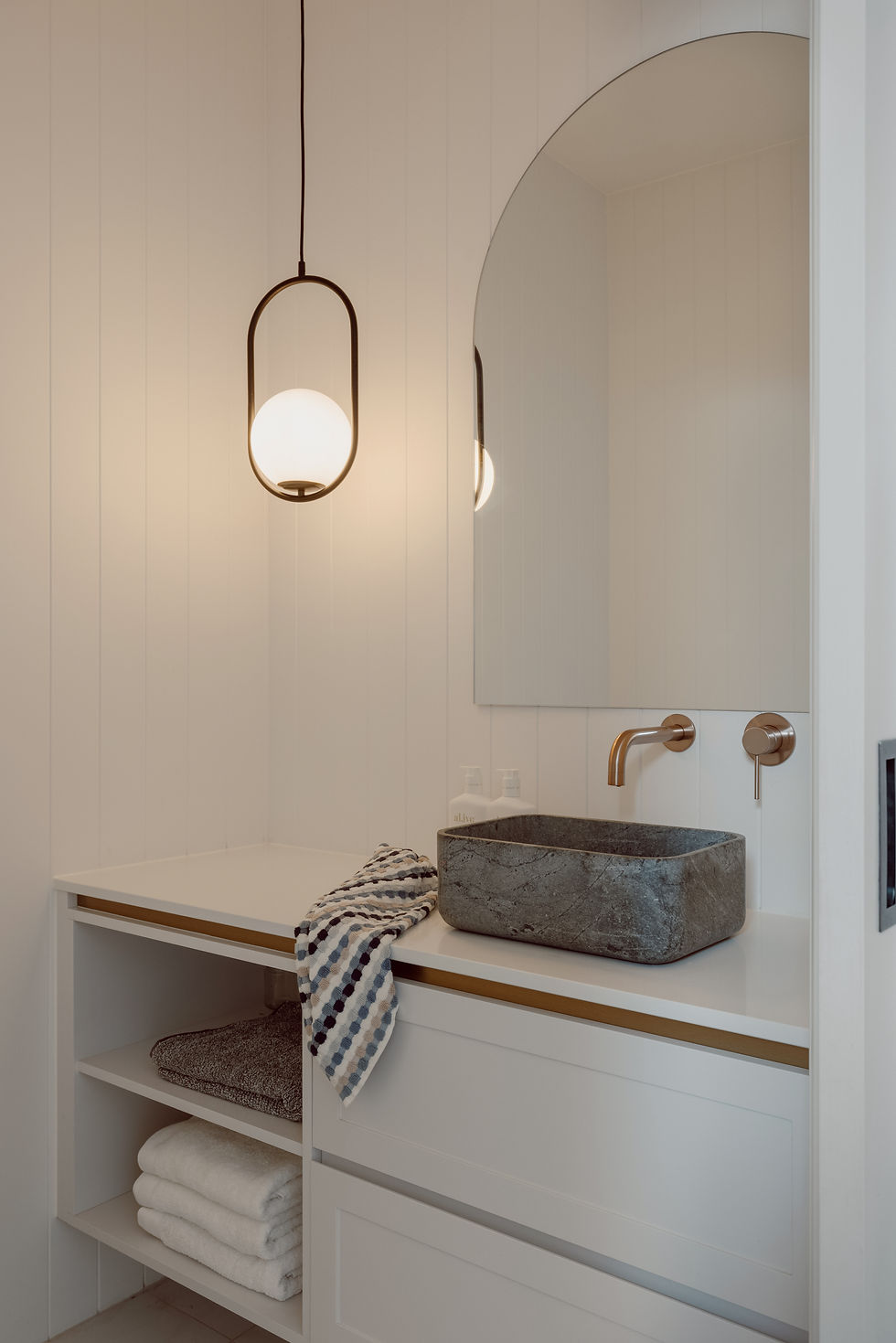Why good lighting design is essential for your wellbeing
- Nina Di Marco

- Jul 21
- 3 min read
Lighting is one of the most powerful (and often most overlooked) tools in interior design. It doesn’t just help you to see what you’re doing or highlight the right features. When planned intentionally, lighting can improve your health, elevate your everyday experience, and enhance the feeling of being truly at home in your space.

Lighting to support your health
Our circadian rhythm is a 24-hour cycle that responds to light and darkness and helps regulate everything from sleep to energy to hormone levels. When your lighting supports this natural cycle, you’re more likely to feel alert during the day, and restful at night. During daylight hours, maximising natural light (particularly in living and working areas) helps to regulate your mood and sleep quality. In the evenings, soft, warm-toned lighting signals to your brain that it’s time to wind down, and can make a significant difference to how easily your body relaxes at the end of the day. We recommend including wall lights or lamps, dimmers on your overhead lights, and/or smart lighting systems to help make the transition from day to night easier.
Light also has a huge effect on our mood and the atmosphere of the space we are in. If you're in a space with harsh bright lights or lights that flicker, you are likely to get more stressed, anxious and overstimulated, and this can even trigger headaches. Particular attention needs to be paid to the colour temperature of the light in order to create the atmosphere you want. You'll notice we mentioned warm-toned lights for the evening above - this is because they create a cosier and more relaxed atmosphere. In contrast, cool-toned lights can help you feel more alert and energised, and may be best for a home office.
Lighting for functionality
While beautiful lighting is important, it must also be purposeful. Functional lighting supports your lifestyle, allowing you to prep dinner without straining your eyes, read comfortably in your favourite chair, or apply makeup without harsh shadows. That’s why we use a layered lighting approach to make each space versatile and user-friendly:
Ambient
This is your general lighting, usually located on your ceiling. However, we try to avoid just covering a ceiling with lots of downlights. This amount of lights is often unnecessary and can create a harsh, glaring environment (while increasing your energy costs!).
Task
This is focused lighting for specific activities, such as cooking and shaving. The aim of task lighting is to reduce strain and stress on your eyes, whilst increasing safety. Task lighting if often forgotten or left as an afterthought, but is actually one of the most important aspects of your lighting design.
Accent
These are your more decorative lights like pendants, wall lights and lamps that are used to set a mood. This can also include spot lights that are used to highlight particular features like a texture on a wall, a cathedral ceiling, or an artwork.

This layered lighting approach allows for spaces to evolve throughout the day as needed. In kitchens, this might look like a few ceiling lights, a pendant over the island bench (that creates enough light to be a task light as well as decorative) and LED strips under your overhead cabinetry. In bathrooms, it’s about balancing flattering mirror lighting using wall lights and/or LED strips with enough ceiling lights to see clearly. And in living spaces, it’s often about giving you the option to dim the lights and unwind at the end of the day without feeling like you’re under a spotlight.
Lighting to enhance your design
Designing spaces that have materials, textures and colours that bring you joy can enhance your mood and wellbeing, but it's all for nothing if you select the wrong type of light that makes everything look completely off. Quality fittings with good CRI (colour rendering index) that make colours and materials look more true and appealing is vital to any space.
Using accent lighting strategically will also not only enhance the design (drawing attention to particular features), but can also change how you interact within the space. For example, if you're wanting to design a cosy intimate nook within an open plan living area, a soft pendant over this area can be used to enhance intimacy and define the space. This is why lighting should be considered alongside the design process from the start, and not as an afterthought.
Good lighting goes far beyond aesthetics. It’s foundational to how your home supports you, day in and day out. When thoughtfully planned, lighting can lift your energy, calm your mind, and create an atmosphere that feels deeply comforting and personal.
Thank you for taking the time to read our blog post. Have a wonderful week!
Nina xx




Comments